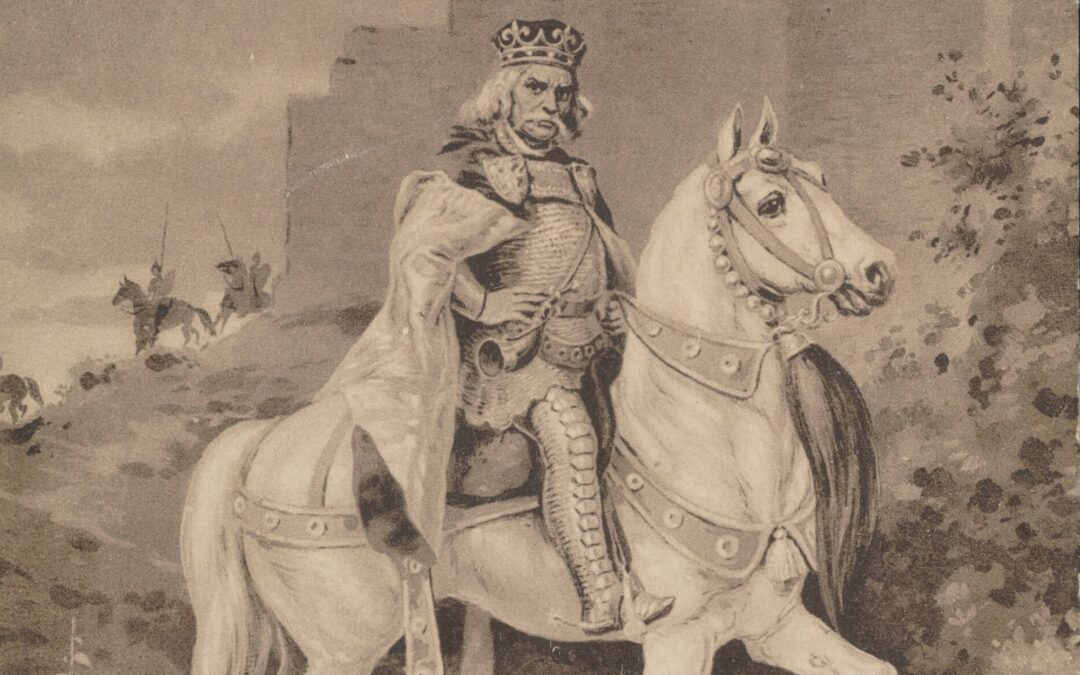Poland’s 14th-century king known as Władysław the Elbow-High was actually taller than often claimed, researchers have concluded after using an endoscopic camera to look inside his tomb.
For years, guides at Wawel Castle in Kraków – Poland’s former royal seat where kings and queens are buried – have told tourists tales of how King Władysław I – nicknamed “Łokietek”, translated as “Elbow-high” in English) was only 120 centimetres (3’11”) tall, reports Onet.
“He was short, but not that short,” archaeologist and head of the research project Tomasz Wagner told the news website. “In our view, the king was 152-155 cm (5’0″-5’1″) tall when he was alive.”
Polish archaeologists endoscopically reached the tomb of the King of Poland, Władysław the Elbow-high, who successfully united Poland in the 14th century. He used politics, diplomacy and military forces. One of the first things that archaeologists saw was a… sword.
⚔️🇵🇱👑🛡️ pic.twitter.com/K2MM1bENSe— Europe of the Jagiellonians (@EJagiellonians) October 1, 2022
That was relatively short at the time – “hence his nickname” – but not dramatically so, added Wagner. The Gazeta Wyborcza daily reports that the average inhabitant of western Europe in the Middle Ages stood at around 165-167 cm (5’5″-5’6″). For comparison, Hollywood actor Danny De Vito is 147 cm (4’10”) tall.
Many historians have argued that Wladysław was not actually as short as often claimed. Some, in fact, believe that his nickname was unrelated to his height, and was rather meant as an insulting term used when he was a prince with relatively little power.
The former priest of Wawel Cathedral, Zdzisław Sochacki, commissioned Wagner to inspect the royal graves after himself being approached by a team of researchers from, among others, the Polish Academy of Sciences who wished to conduct genetic research on the Piasts, Poland’s first ruling dynasty.
The researchers, however, did not fully open the burial chamber of Władysław I, who ruled Poland from 1320 until his death in 1333, as they were afraid that it would be damaged in the process.
Instead, they drilled three boreholes with a diameter of 188 mm, after carrying out a GPR scan beforehand. Those holes were then use to allow an endoscopic camera to document the inside of the tomb.
As it turned out, the burial chamber in which Władysław I was laid to rest was well preserved and clean, with only a little rubble dating to the 19th century, Wagner said. In 1838, a previous attempt had been made to open the ruler’s tomb, notes Gazeta Wyborcza.
The ruler’s body was laid at the bottom of the chamber and his remains have been preserved in very good condition. His bones were found in the same pose in which he was placed in the tomb in 1333.
Garments in navy blue and the shoes of the deceased were preserved. A royal sceptre was found, as well as a wooden apple that had disintegrated over the years. However, there was no crown and no trace of it was discovered on the king’s skull.
When the body was placed in the tomb, a silk scarf was probably laid over the king’s face, which is still preserved today. A sword, partly covered by rubble, still lies by his side. Genetic material in the form of bone fragments was not taken, for fear of damaging the unusually well-preserved remains.
“Endoscopic examinations have shown that the tomb chamber cannot be opened,” says Wagner. “This would be very complicated and [cause] great damage…For now, we can only rely on endoscopic examination, as it is unlikely that it will be possible to expand this research in the future.”
Main image credit: Mieczysław Barwicki/Wikimedia Commons (under CC BY-SA 4.0)

Alicja Ptak is senior editor at Notes from Poland and a multimedia journalist. She previously worked for Reuters.



















